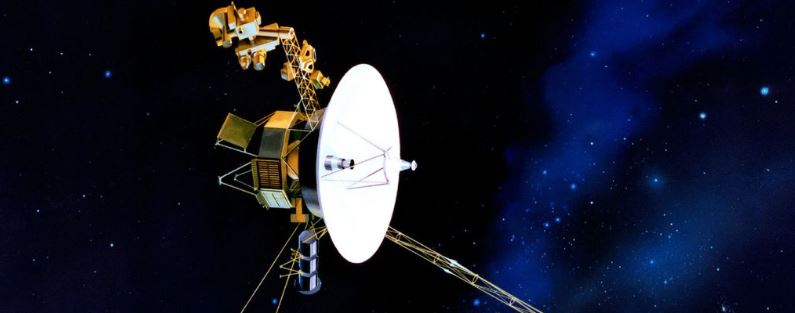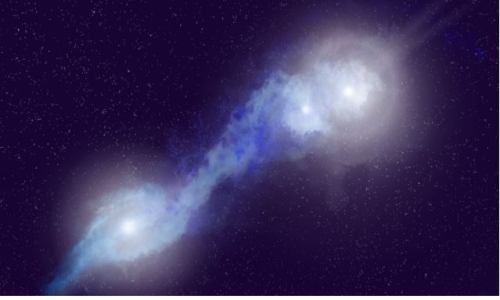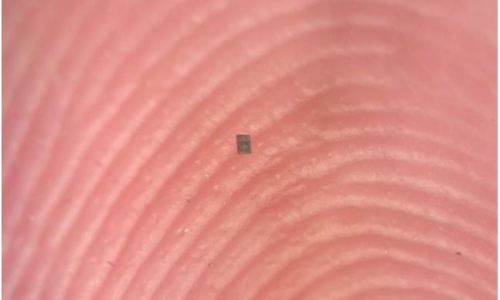


 5:17:54
5:17:54  2024-10-04
2024-10-04  996
996

The two Voyager spacecraft have been speeding through space since 1977, powered by decaying chunks of plutonium that produce less and less energy every year.
With less electricity available, NASA has decided to shut down one experiment on Voyager 2, the plasma science instrument. This device measures the quantity and direction of ionized particles passing the spacecraft.
While Voyager 2 still has enough electricity to support its four other operational instruments, it will likely be down to just one by the 2030s.
NASA said that over the past several years, engineers for the mission have taken steps to avoid turning off any science instruments for as long as possible since the science data collected by the two Voyager probes is unique.
As the first spacecraft to reach interstellar space — the region outside the heliosphere – this is currently our only chance to study this region.
However, this particular instrument has been collecting limited data in recent years due to its orientation relative to the direction that plasma is flowing in interstellar space.
The 47-year old Voyager 2 is traveling at about 15 km/second (35,000 miles per hour) and is currently more than 20.5 billion km (12.8 billion miles) from Earth.
The four remaining science instruments are studying the region outside our heliosphere and include a magnetometer to study the interplanetary magnetic field, a charged particle instrument that measures the distributions of ions and electrons, a cosmic ray system that determines the origin of interstellar cosmic rays, and a plasma wave detector.
The two Voyagers both launched in 1977 (August and September), and their different trajectories were designed to take advantage of a rare geometric arrangement of the outer planets in the late 1970s and the 1980s which allowed for a four-planet tour for a minimum of propellant and trip time.
The positions of those planets — which only occurs about every 175 years — took Voyager 2 (which launched first) past the gas giants Jupiter and Saturn, and then its flight path allowed for encounters with the ice giants Uranus and Neptune.
It remains the only spacecraft to have visited either of the ice giant planets.
Voyager 1 made flybys of Jupiter, Saturn, and Saturn's largest moon, Titan. Both spacecraft made incredible discoveries at the distant planets, and the astounding imagery sent back to Earth opened a whole new way of looking at the outer Solar System.
Now, they're in the Voyager Interstellar Mission phase, where their data helped characterize and study the regions and boundaries of the outer heliosphere, and now explores the interstellar medium.
Voyager 1 crossed the heliopause and entered interstellar space on August 25, 2012. Voyager 2 entered interstellar space on November 5, 2018, at a distance of 119.7 AU.
Both communicate with Earth via the Deep Space Network. It takes nearly a day for one-way communications to reach each spacecraft and another day for data to be sent back to Earth.
At launch, each RTG provided enough heat to generate approximately 157 watts of electrical power, and so collectively, the RTGs supplied the spacecraft with 470 watts at launch, and their power halves every 87.7 years.
They were predicted to allow operations to continue until at least 2020, but are still providing enough energy for some data collection and communications. Nasa estimates they lose about 4 watts of power each year.
After the twin Voyagers completed their exploration of the giant planets in the 1980s, the mission team turned off several science instruments that would not be used to study interstellar space. That gave the spacecraft plenty of extra power until a few years ago.
Since then, the team has turned off all onboard systems not essential for keeping the probes working, including some heaters. In order to postpone having to shut off another science instrument, they also adjusted how Voyager 2's voltage is monitored.
The device that was recently turned off, the plasma science instrument, measured the amount of plasma (electrically charged atoms) and the direction it is flowing.
In 2018, the plasma science instrument helped determine that Voyager 2 left the heliosphere.
Inside the heliosphere, particles from the Sun flow outward, away from our parent star. Since the heliosphere is moving through interstellar space, the plasma flows in almost the opposite direction of the solar particles.
When Voyager 2 exited the heliosphere, the flow of plasma into the instrument dropped off dramatically.
Most recently, the instrument has been used only once every three months, when the spacecraft does a 360-degree turn on the axis pointed toward the Sun. This limited usage factored into the mission's decision to turn this instrument off before others.
NASA said the same plasma science instrument on Voyager 1 stopped working in 1980 and was turned off in 2007 to save power.
Reality Of Islam |
|

Some 1.2 bi

A tiny robo

By applying
 9:3:43
9:3:43
 2018-11-05
2018-11-05
10 benefits of Marriage in Islam
 7:5:22
7:5:22
 2019-04-08
2019-04-08
benefits of reciting surat yunus, hud &
 9:45:7
9:45:7
 2018-12-24
2018-12-24
advantages & disadvantages of divorce
 11:35:12
11:35:12
 2018-06-10
2018-06-10
 6:0:51
6:0:51
 2018-10-16
2018-10-16
 9:39:36
9:39:36
 2022-12-28
2022-12-28
 3:18:29
3:18:29
 2022-12-24
2022-12-24
 4:2:19
4:2:19
 2022-10-10
2022-10-10
 7:34:7
7:34:7
 2023-02-28
2023-02-28
allah will not answer all your prayers
 6:56:28
6:56:28
 2022-01-01
2022-01-01
 12:47:1
12:47:1
 2022-12-20
2022-12-20
 8:39:51
8:39:51
 2022-09-23
2022-09-23
 5:41:46
5:41:46
 2023-03-18
2023-03-18
| LATEST |